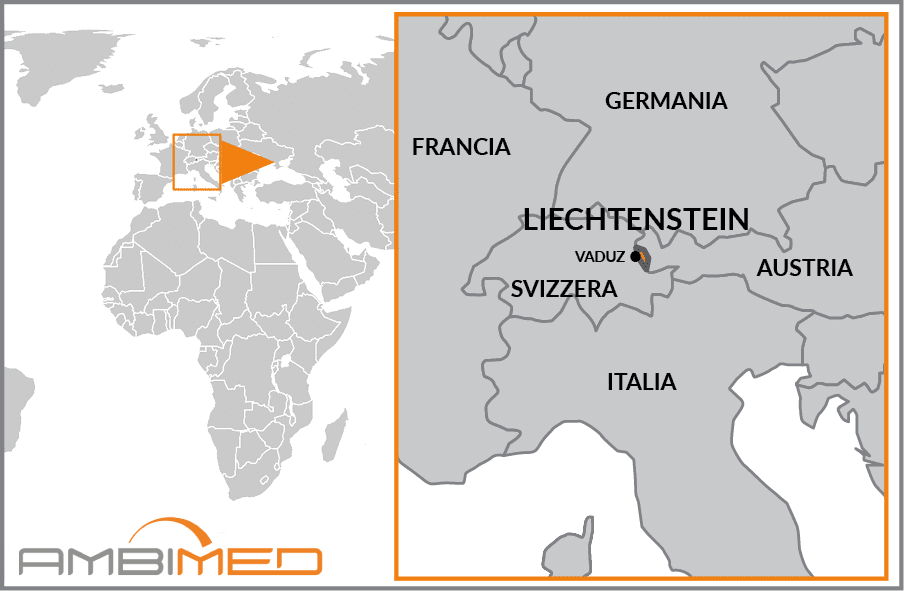Ambimed-Group
Travel Medicine
Business Travel Medicine
Easily manage your reservations and stay constantly updated on Ambimed services.

|
Country Name |
Principality of Liechtenstein |
|
Continent |
Europe |
|
Surface area |
160 km2 |
|
Capital |
Vaduz |
|
Population |
36,942 (2013) |
|
Language |
German |
|
Currency |
Swiss Franc (CHF) |
|
Time zone |
The same as Italy |
|
Area code for Italy |
0039 |
|
Area code from Italy |
0041 |
Yellow fever vaccination is not required.
Infection typically occurs through contact with the saliva of an infected animal, usually caused by bites, scratches or licks near open wounds or mucous membranes (e.g. mouth, nose, eyes). The most common vectors are dogs and bats, but cases of infection in other domestic animals have also been reported.
Caused by toxins released by the bacterium Clostridium tetani, the risk of tetanus infection is present throughout the country.
Diseases such as Crimean-Congo Haemorrhagic Fever, Leishmaniasis, and West Nile virus are present in Southern Europe. As these diseases are transmitted by insect bites and there are no vaccines, it is important to adopt careful behavioural and preventive measures.
The following vaccinations are strongly recommended as these diseases can be contracted anywhere in the world. Experts advise that you protect yourself and other travellers by making sure you are up-to-date with all of the recommended vaccinations. This will allow you to travel safely, while minimising the risk of exposure to infection.
Liechtenstein has a relatively small area. The microstate borders Switzerland to the south and west (the latter of which is entirely bordered by the Rhine River), and Austria to the north and east. The southeast region of the country is mountainous and thins out into the Rhine Plain as you proceed westward.
The highlands, where some peaks can reach almost 2,600 metres, has an alpine climate, marked by harsh winters and snowy precipitations. Whereas, toward the plains, the climate becomes more continental, with cold winters and fairly warm summer temperatures of up to 24°C.